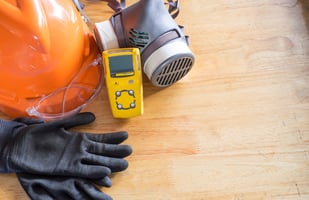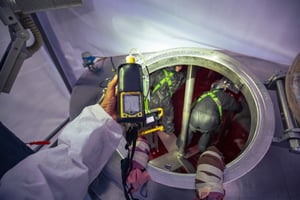Ensuring the safety and reliability of gas detectors in industrial settings is paramount to...
The Importance of BUMP Testing
In environments where the presence of hazardous gases is a constant concern, gas detectors play a pivotal role in safeguarding lives and property. These devices serve as the first line of defence against potential dangers, providing early warnings and allowing for timely intervention. However, the reliability of these instruments hinges on a crucial practice often overlooked: Before Use Maintenance Procedure (BUMP) testing. In this article, we'll delve into the significance of BUMP testing gas detectors and why it should be an integral part of any safety protocol.
Understanding BUMP Testing
BUMP testing, also known as function testing, is a quick and simple procedure performed to ensure that a gas detector responds to a known concentration of gas. This process involves exposing the sensors to a certified test gas, usually at a concentration that is higher than the alarm setpoints. The objective is to verify that the gas detector activates the alarm as expected, indicating that it is functioning correctly.
The Importance of BUMP Testing
-
Reliability Assurance: BUMP testing is a proactive measure to confirm the reliability of gas detectors. Regular testing provides confidence that the sensors are responsive and capable of detecting hazardous gases. Without this assurance, users may unknowingly rely on faulty equipment, compromising safety in the process.
-
Early Detection of Malfunctions: Gas detectors can undergo wear and tear or poisoning over time, and environmental factors can impact their performance. BUMP testing helps identify potential malfunctions before they escalate into critical issues. Early detection allows for timely maintenance or replacement, reducing the risk of failure during a real emergency.
-
Verification of Alarm Thresholds: BUMP testing provides an opportunity to verify that the gas detectors trigger alarms at the correct concentration levels. This is crucial for preventing false alarms or, conversely, ensuring that alarms activate promptly in the presence of hazardous gases. Proper calibration and confirmation of alarm thresholds are essential for an effective safety strategy.
-
Employee Confidence and Awareness: Regular BUMP testing fosters a culture of safety within an organisation. When employees see that gas detectors are routinely tested and maintained, they are more likely to trust in the effectiveness of the safety measures in place. This increased awareness can lead to a more vigilant workforce, further enhancing overall safety.
Conclusion
In the realm of occupational safety, the reliability of gas detectors is non-negotiable. BUMP testing serves as a critical checkpoint, ensuring that these devices function optimally and provide readings when it matters most. Implementing a robust BUMP testing routine is not just a best practice; it is a fundamental step towards creating a secure work environment where the risks associated with hazardous gases are minimized. As technology advances, incorporating automated BUMP testing features into gas detection systems can streamline the process, making it even more accessible and efficient for organisations committed to prioritising safety.





